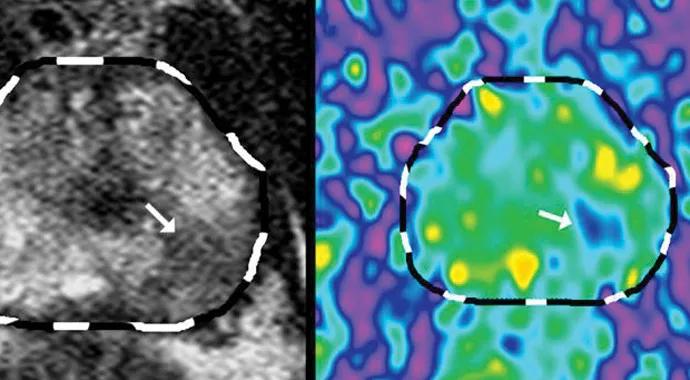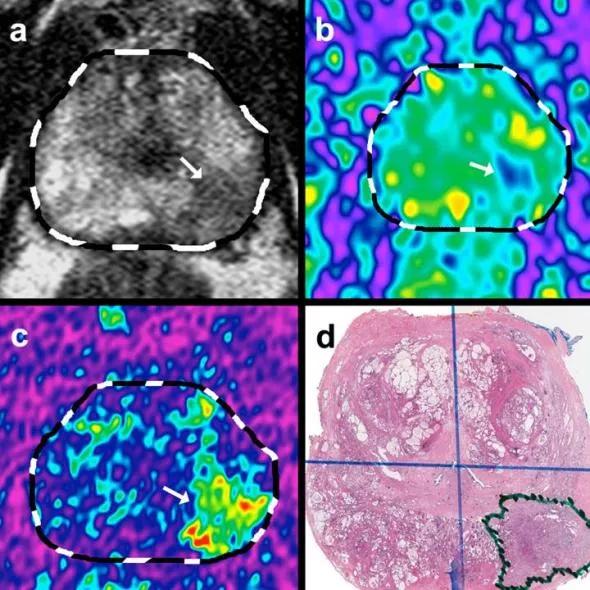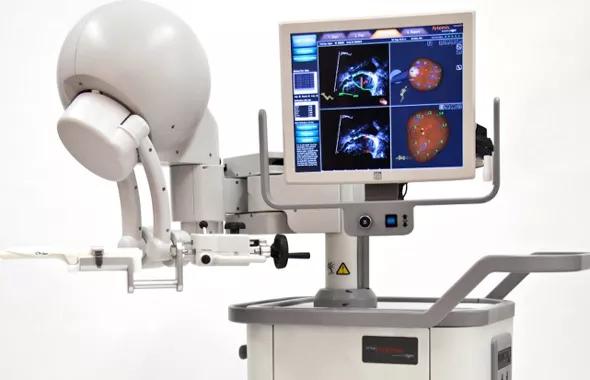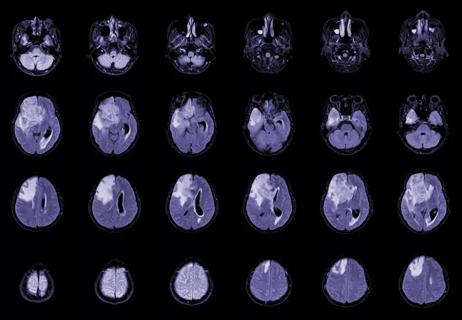Advertisement
Technology blends MRI and ultrasound to improve biopsy accuracy

By Andrew J. Stephenson, MD, FRCSC, FACS
Advertisement
Cleveland Clinic is a non-profit academic medical center. Advertising on our site helps support our mission. We do not endorse non-Cleveland Clinic products or services. Policy
Accurate localization/characterization of clinically important prostate cancer lesions among healthy men who are otherwise candidates for curative therapy is essential for successful active surveillance and focal therapy strategies.
Indeed, progression rates on active surveillance as high as 48 percent over short (< 5 years) time intervals have been reported, and rates of advanced pathological features (Gleason score ≥ 4+3, extraprostatic extension, seminal vesicle invasion or lymph node metastasis) as high as 23 percent have been reported among men undergoing deferred radical prostatectomy.
The limitations of transrectal biopsy strategies to accurately characterize and localize prostate cancer are highlighted by the consistent 20 percent to 30 percent reclassification rate among low-risk men undergoing immediate repeat extended prostate biopsy (10 to 14 cores) on active surveillance protocols.
Likewise, among men undergoing repeat saturation biopsy (≥ 20 cores) after one and two prior negative biopsies, we reported a cancer detection rate of 33 percent and 19 percent, respectively. Among men with known low-risk prostate cancer undergoing three-dimensional transperineal mapping biopsy (3D-TPMB), a 20 percent negative biopsy rate has been reported despite 50- to 69-core sampling. Molecular tests such as Prolaris® and OncotypeDx® may provide useful information regarding prostate cancer staging and risk, but their utility in patient selection for active surveillance and focal therapy (and subsequent monitoring) is unproven.
Advances in prostate imaging using multiparametric magnetic resonance imaging (MP-MRI) and the ability to apply this information to targeted biopsy strategies using transrectal ultrasound (termed MP-MRI-US fusion biopsy) have the potential to improve our ability to accurately localize and characterize individual prostate cancer lesions.
Advances in MRI such as improved anatomical resolution on T1 and T2 weighted images (T2WI) with the use of 3 Tesla magnets, and functional imaging sequences using diffusion-weighted imaging (DWI), dynamic contrast enhancement (DCE) and MR spectroscopic imaging (MRSI), allow better diagnostic accuracy for prostate cancer ( 1 Figure 1. Prostate cancer lesion identified on T2-weighted images (A), diffusion-weighted sequences (B), dynamic contrast enhancement sequences (C) and whole-mount prostatectomy specimen (D). Reprinted from Urol Oncol, 2011 May-Jun;29(3):334-342, Clinical Application of a 3D Ultrasound-guided Prostate Biopsy System, S Natarajan et al., Copyright 2011, with permission from Elsevier ).
Advertisement
DCE allows for the visualization of blood perfusion via a bolus injection of gadolinium contrast during rapidly repeated scanning. Evidence of early and intense enhancement and washout in lesions is associated with angiogenesis seen in prostate cancers. DWI quantifies free water motion, which is restricted in lesions with increased cellularity, as is seen in prostate cancers. MRSI measures levels of choline (increased in cancer) relative to creatine and citrate peaks, and increases the specificity of low-signal intensity lesions seen on T2WI.

However, the incremental benefit of MRSI to DWI and DCE sequences appears to be limited. The use of MP-MRI for prostate cancer detection and characterization has been aided by a standardized grading system called PI-RADS that rates regions of interest on a scale of 1 to 5 based on the likelihood of clinically significant cancer. MP-MRI using the PI-RADS scoring system has shown a sensitivity and specificity for prostate cancer detection of 67 percent and 92 percent, respectively, with 85 percent diagnostic accuracy.
The use of MP-MRI for targeted prostate biopsy has been limited by the time, expense and impracticality of performing biopsies under real-time MRI guidance in the MRI gantry. Likewise, the use of MP-MRI to perform targeted biopsies of suspected lesions using standard transrectal ultrasound (TRUS), or so-called cognitive recognition, has questionable accuracy.
Technological developments now enable MP-MRI images to be “fused” with TRUS using specialized computer software to improve targeted biopsy of suspicious lesions. Various tracking systems have been described, including a 3-D US probe attached to a mechanical arm (Figure 2. Artemis 3-D ultrasound biopsy tracking system (Eigen, Grass Valley, Calif). Reprinted from Urol Oncol, 2011 May-Jun;29(3):334-342, Clinical Application of a 3D Ultrasound-guided Prostate Biopsy System, S Natarajan et al., Copyright 2011, with permission from Elsevier.), and one that uses an electromagnetic (EM) field generator placed above the pelvis with a custom US probe embedded with a passive EM tracking sensor. The best approach has yet to be determined.

Using MP-MRI-US fusion targeted biopsy, cancer detection rates of 15 percent to 20 percent, 29 percent to 40 percent, and 50 percent to 71 percent have been reported among lesions classified as low, moderate, and high probability of cancer, respectively. Likewise, targeted biopsies are more likely to detect high-grade cancers (38 percent of which were missed by standard 12-core biopsy in one study). Targeted biopsy strategies also appear to be as accurate as 3D-TPMB for detecting clinically significant cancers. On average, 6 to 13 additional biopsies are taken per patient when a targeted biopsy strategy is added to a standard 12-core biopsy.
Advertisement
MP-MRI-US fusion targeted biopsy has the potential to significantly improve the localization and characterization of prostate cancer when added to a standard 12-core biopsy. It is anticipated that this strategy will enable better selection and monitoring of patients who choose active surveillance and focal therapy as a management option. This technology may also be useful in patients with suspicion of prostate cancer despite one or more negative biopsies. Cleveland Clinic has begun offering MP-MRI-US fusion targeted prostate biopsy to patients. We also plan to investigate its utility in active surveillance and focal therapy protocols.
Dr. Stephenson is Director of the Center for Urologic Oncology at Cleveland Clinic’s Glickman Urological & Kidney Institute and a staff member of the Taussig Cancer Institute.
Advertisement
Advertisement

Key research findings to watch

Timing and type of side effects differ greatly from chemotherapy

Dedicated multidisciplinary teams support 84 ultra-rare cancers

New research from Cleveland Clinic helps explain why these tumors are so refractory to treatment, and suggests new therapeutic avenues

Combination of olaparib and carboplatin results in complete durable response for a patient with BRCA2 and “BRCAness” mutations

Early communication between oncologists and ophthalmologist warranted

Case-based course delves into latest treatment approaches

Long-term relationship building and engagement key to gaining community trust